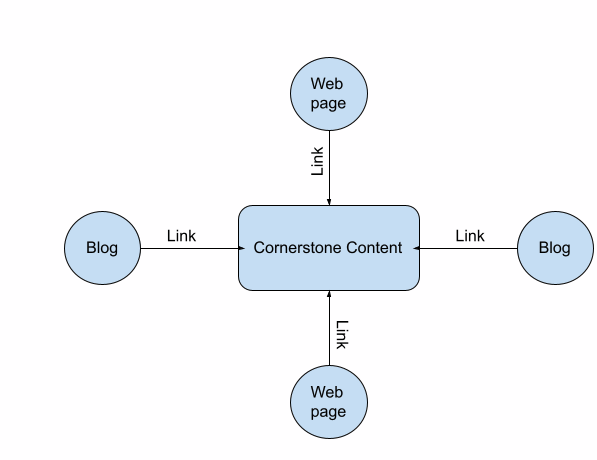What Is Deep Linking? Your Top Guide to Deep Linking in SEO
What is deep linking in SEO? And, is it necessary for ranking higher on Google?
“Linking” is a common phrase in the SEO world that can refer to:
External links
Backlinks
Utilizing these kinds of links on your website (especially in blogs and valuable pieces of content) can benefit your overall website’s crawlability and rank on search engines.
But when we talk about “deep linking”, we’re talking about internal links from one page on your website to another. Doing this well and in a way that allows you to reap the SEO benefits often requires an SEO linking strategy.
Interested in learning more about deep linking in SEO?
Well, that’s what this article is all about.
Join us as we answer the question “What is deep linking?” by providing you with a deep linking definition. Then, we’ll share some basics on how to build an SEO internal link strategy that gets results.
Let’s jump right into the deep (linking) end!
What Is Deep Linking in SEO?
Ready for a deep linking definition?
Deep linking in SEO is when someone sends many internal links to a page (or pages) on their website other than the main home page.
Why would this be valuable?
Because by directing a large number of relevant internal links to one or a few high-quality pages, these pages can increase in authority and more quickly rank high on Google’s first page. It’s a way to elevate key pages so that more people (hopefully potential customers and clients) can find them easier.
But just creating a piece of content and then linking to it won’t get you the results you want. Instead, you’ll want to create an SEO link strategy and follow some deep linking best practices.
Three Steps to Creating an SEO Link Strategy
Unsure how to create and implement an SEO linking strategy on your website?
Deep linking in SEO isn’t complicated and can be boiled down to three main steps:
Brainstorming and creating cornerstone content
Writing relevant, supporting content
Linking supplemental content to cornerstone content
Here’s a closer look at these steps.
1. Brainstorm and Create Cornerstone Content
The first step to deep linking in SEO is to brainstorm and create your cornerstone content.
Cornerstone content is the content that’s most valuable to your intended audience (aka, your customers/clients). It’s often three to five in-depth articles or web pages that provide complete information about topics related to your company’s expertise.
These pages should:
Be evergreen (content that’s relevant year-over-year)
Be updated regularly
Target your most valuable keywords
For example, here at Veivos, we’re an SEM firm that specializes in search engine optimization (SEO) and Google Ads campaigns. Cornerstone pages for us could be something like, “What Is SEO and Why It’s Important in Today’s Digital World” or “The Power of Google Ads for Small- to Mid-size Businesses.”
Take some time to think about a few topics that would help your audience understand who you are, your mission and vision, and what solutions you offer to their problems.
2. Write Relevant, Supplemental Content
Once you’ve nailed down your cornerstone content topics, you need to supplement them with relevant content. These supplemental pages could be other blogs, web pages, or a mix of both.
However, the most important thing is that the supplemental pages are directly related to the cornerstone page.
Let’s take the example of Veivos from the previous point. If we were focusing on an SEO deep linking strategy for the “What Is SEO and Why It’s Important in Today’s Digital World,” we might write some blogs like:
The Top 5 Benefits of SEO for your website
SEO Best Practices and How to Start Implementing Them Today
Each of these blogs directly relates to the cornerstone topic of SEO. We’d do the same thing for each of our other cornerstone pages, and any cornerstone pages we developed in the future.
Like with cornerstone pages, it can be helpful to brainstorm a list of three to five supplemental pages for each cornerstone page.
3. Link Supplemental Content to Cornerstone Pages
The final step of an SEO link strategy is to link to the cornerstone page from each of its supplemental pages.
The main thing to remember with internal links is that you want the anchor text (the text that receives the hyperlink from the supplemental page to the cornerstone page) to be descriptive of the page it’s sending readers to.
For example, anchor text that says “click here” or “read this” isn’t very descriptive. Instead, you should use anchor text like “there are three main ways to rank on Google’s first page” and link to an article about ranking on the first page of Google. Following this linking best practice allows readers (and Google) to see the direct connection between the anchor text and the content it links to.
Implement an SEO Deep Linking Strategy Today
We started the article by answering the question, “What is deep linking in SEO?” with this deep linking definition:
Deep linking in SEO is the practice of internally linking several related pieces of content to one key piece of content.
Creating and implementing an SEO deep linking strategy often requires these three steps:
Brainstorming and creating cornerstone content
Writing relevant, supplementary content
Linking supplemental content to the cornerstone content
One final note regarding deep linking in SEO is that it can be helpful to take one cornerstone page and focus on it for a few weeks or months, dedicating three to five blogs to that one page. Once you’ve built up a good amount of internal links to that cornerstone page, you can move on to the next one.
However, putting an effective SEO link strategy in place yourself requires dedicated time, resources, and effort. Sometimes, it’s best to let an experienced agency get your website’s SEO off the ground.
Here at Veivos, we provide holistic SEO strategies to companies looking to increase their online presence and outrank their competitors. We focus on four key areas:
Creating valuable keyword strategies for web pages and blogs
Writing and publishing SEO-friendly blogs regularly
Implementing linking strategies (internal, external, and backlinks)
Ensuring overall website health
We’ve helped many businesses in a wide range of industries meet their digital marketing goals of connecting with more customers/clients and increasing revenue.
Schedule a 20-minute call today to learn more about how our SEO services can benefit your company.


